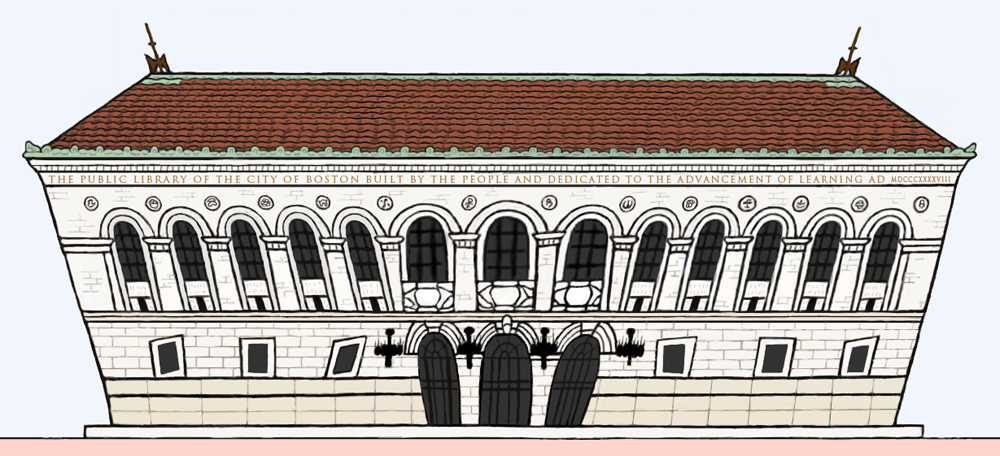RICHARD S. DARGAN | Architecture
Boston Public Library
| |||||||
 |
|||||||
Date: 1892 The symmetrical, light granite facade of the Boston Public Library (BPL) provides a stark contrast to the the dark Romanesque pile of Trinity Church across from it on Copley Square. The building was part of a reaction to what historian Lewis Mumford called the "Brown Decades" of the latter half of the 19th century, when medieval styles with polychrome walls of stone predominated. BPL features a triple-arched main entrance decorated with wrought iron candelabras and a sculpture of the head of Minerva on the keystone of the center arch. The arched, arcaded windows of the second floor are the building's most conspicuous feature. Beneath the the three windows above the entryway are seals of the city, state and library carved into pale pink Knoxville Tennessee marble. Medallions decorate the spandrels of the window arches, each carved with a different scene representing the trade devices of early printers, and inscriptions fill the entablature and the tablets beneath each window arch. There is a prominent stringcourse separating the two floors, and the cornice is topped with copper cresting featuring a dolphin and shell motif. The massive building stands on an elevated, staired pedestal. BPL helped usher in the Second Renaissance Revival, also known as the Italian Renaissance Revival, a movement characterized by large buildings with low-pitched hipped roofs covered with ceramic tiles. Other examples include the enormous Breakers mansion (1893) in Newport, R.I., and public libraries in Omaha (1891), Detroit (1920) and Springfield, Mass.(1912). These buildings exploited improved materials and technology to open up the windows of the Italian Renaissance palazzo (e.g., the Palazzo Medici in Florence). According to Charles Follen McKim, co-founder of the firm that designed the building, the arched windows were inspired by the side elevations of San Francisco de Rimini (1468) by Leon Battista Alberti (1404-1472), although the Bibliothèque Sainte-Geneviéve in Paris appears to have been the more immediate source. That building, located across from the Pantheon in Paris' Latin Quarter, has rows of arched windows underpinned by inscribed tablets, but the windows are quite a bit smaller than those of BPL. BPL is an outstanding example of collaboration among architects, painters, and sculptors. Bela Pratt and Augustus Saint-Gaudens created both freestanding sculptures and panels for the entry facade, and John Singer Sargent, Puvis de Chavannes and Edward Austin Abbey painted murals on the inside. |
|||||||